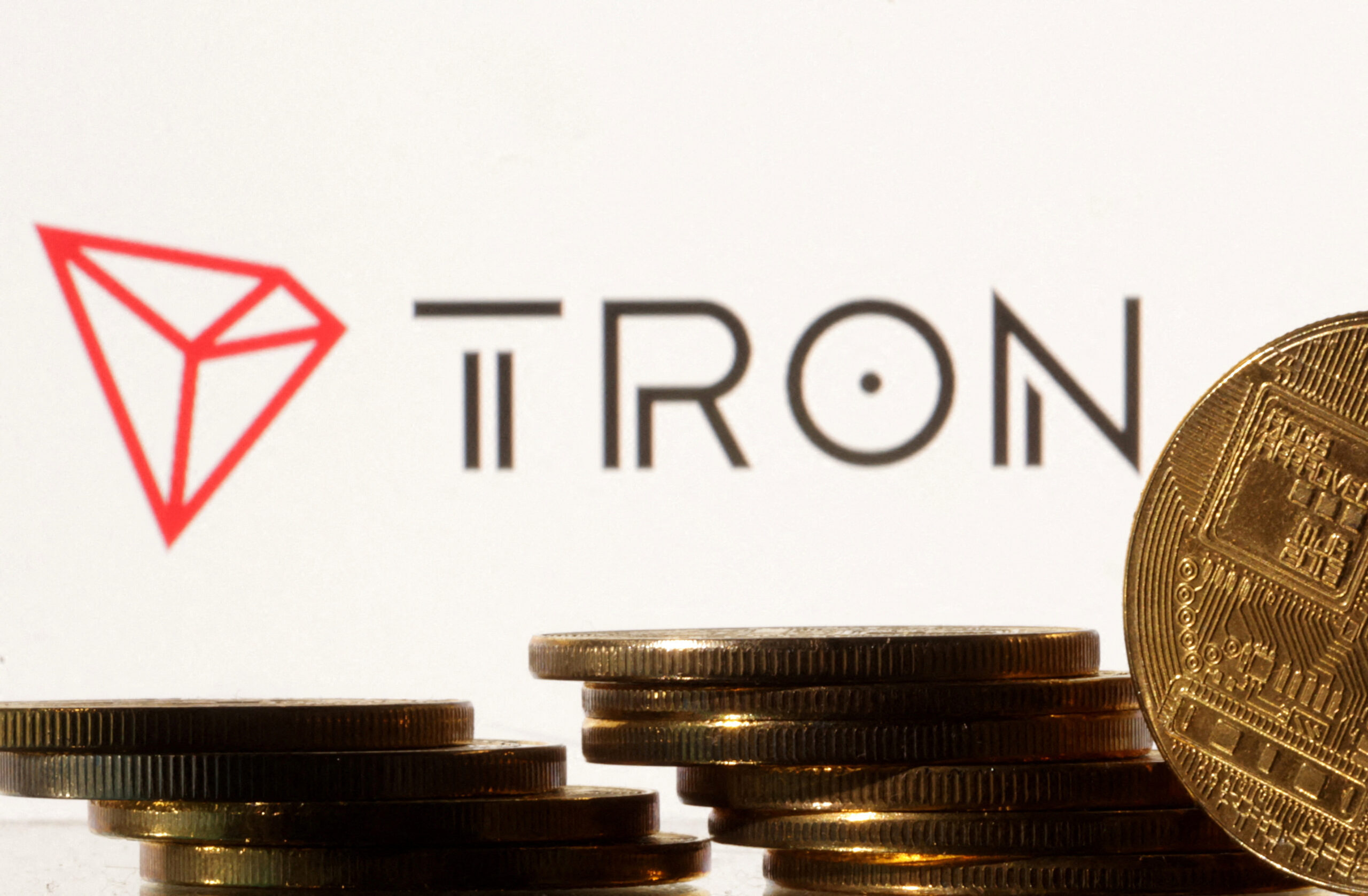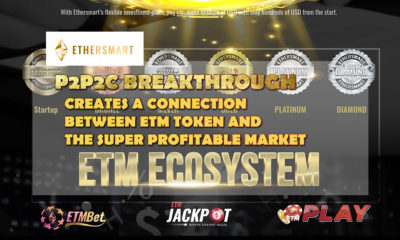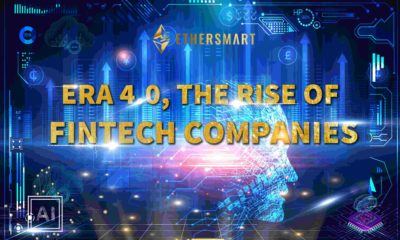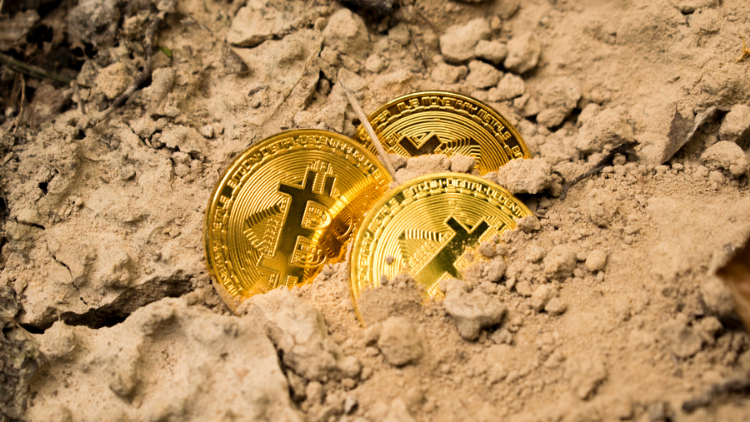Blockchain
Esports and Virtual Sports: How Are They Different?

With the COVID-19 pandemic, many traditional sports bettors have started to look for other alternatives, namely esports and virtual sports.
To novices, esports and virtual sports might seem like the same thing, but there are many different features that set these two apart. We will be explaining what particularities esports and virtual sports have in order to help bettors decide which type of sports is more suited for their betting style.
What Are Esports?
Esports define the concept of gaming seen as a sport, where professional video game players compete in tournaments for prizes. Such competitions are basically a video game in which real players fight with each other.
While there are several video games that have traditional sports, such as football (FIFA), the most popular genres are multiplayer online battle arenas (MOBA), such as DOTA II, and first-person shooter games like Fortnite, Call of Duty, and Counter-Strike.
Betting on Esports involves betting on a team or individual player, either during the tournament, league, or match. Like traditional sports, you can place bets while the game is live, and you can also watch the live streams of big events, just like football.
Since the pandemic caused many traditional sports games to be canceled, many have shifted their interest towards esports, as these types of matches can be carried out exclusively online.
What Are Virtual Sports?
Virtual sports are virtual simulations of real-world, popular sports and do not involve any real action, as the outcomes are generated by computer-based sequences through the use of a Random Number Generator (RNG) software.
There are plenty of virtual sports based on “normal” sports betting, but the most popular seem to be horse racing and football. As these games use RNGs, betting on them is more similar to playing at an online casino than on a sportsbook. Instead of betting on the spin of a slot, you bet on a horse, a football team, or a racing car. Esports betting is more similar to real-sports betting, as the principle is largely the same.
The RNG software determines which player or team will win based on their odds, and their chance of winning in proportion to the odds is identical.
Virtual sports have been around for a long time, but because of the limited number of traditional sporting events, this type of betting has seen a resurgence, as bettors were seeking sports options during the pandemic.
Pros and Cons of Esports vs Virtual Sports
Both types of sports have their pros and cons when it comes to betting:
- Esports are more entertaining for video game fans, so you can understand the odds for such matches better;
- Virtual sports are easier to understand by traditional sports fans;
- When it comes to betting, Esports betting has the same mechanism that is applied to traditional sports betting, as you wager on the outcome of real-life events, even though they are happening online;
- Virtual sports betting is more like casino gambling, as the outcomes are generated at random, like with slots;
- You can bet on virtual sports whenever you want, as they are streamed non-stop;
- Esports events are played frequently, but not like virtual sports.
Whether you are into virtual sports betting or esports betting, the 1xBit online crypto sportsbook offers plenty of events for both. Here you can find games such as DOTA II, StarCraft, Overwatch, Rainbow 6, PUBG, Fortnite, and CS:GO, as well as virtual versions of football, racing, tennis, cockfights, and many others.
1xBit features a wide line on all bets, having a variety of bids for sports events, with over 20 betting variations per event, including Double Chance, Handicap, Correct Score, and many more. At 1xBit, you can find the best odds in the crypto sportsbook industry.
Registering on the platform is simple and requires only one click. No email or personal information has to be submitted, as the site automatically generates an account number and password. This, combined with the exclusive use of cryptocurrencies as payment, make 1xBit a fully anonymous sportsbook.
Users can fund their multi-currency accounts as soon as they create it, and they can start placing bets on their favorite esport or virtual sport without any worries.
1xBit supports the deposit and withdrawal of over 20 different cryptos, including Bitcoin, Ethereum, and Litecoin. Payouts are executed quickly, and there are no transaction fees on 1xBit’s part, as all transactions are based on crypto.
New users can take advantage of a welcome bonus of 7 BTC that is given throughout the course of their first four deposits, where they can claim between 1 and 3 BTC for each deposit.
Come and discover esports and virtual betting on 1xBit and enrich your crypto funds!
Blockchain
BlockDAG’s $331.5M Presale Steals The Show As TRON Transactions Jump & Dogecoin Eyes Breakout

Technical patterns often reveal more than short-term excitement. TRON has seen its daily transactions jump 80%, showing strong network activity. Dogecoin, on the other hand, is forming a descending triangle pattern that hints at a possible sharp move ahead. Both coins are drawing attention, one for higher usage, the other for possible price action.
But BlockDAG (BDAG) clearly leads with its real-world partnership and forward-thinking presale. With $331.5M raised and over 23.5 billion coins already sold, BlockDAG offers a unique combination of utility and opportunity. The limited-time $0.0016 GLOBAL LAUNCH release price opens the door for greater potential returns. For anyone looking at which crypto to buy today, BlockDAG’s offer stands out with real use and future upside.
TRON Daily Transactions Soar 80% Showing Strength
TRON technical data shows an 80% rise in daily transactions. Activity has grown from about 5 million to nearly 9 million a day since last September. The network’s real use has climbed, and higher fees paid in TRX on-chain point to steady demand beyond short-term moves. However, TRON’s price faces strong resistance at $0.28. Its price has remained between $0.275 and $0.283 where many liquidation points limit upward movement.
The Relative Strength Index is also close to overbought levels, suggesting the chance of a short-term dip unless volume builds to break higher. For TRON to leave the tight range of $0.26 to $0.28, continued buying power will be key. Larger holders adding quietly and increasing social media talk suggest that a breakout could happen if the $0.28 barrier is finally cleared.
Dogecoin Shapes Triangle Pattern Eyes Big Break
Dogecoin is forming a descending triangle pattern where the price keeps bouncing off steady support around $0.1369 while making lower highs. This points to a phase where price action tightens, often before a major move. The repeated tests of support match the classic “1-2-3” pattern often seen before price climbs, showing strong interest from buyers at these levels.
As the pattern narrows, price swings have become smaller, which usually sets up the conditions for a breakout. Many are watching for a push toward $1 if the price can move above the triangle. If momentum holds, the price could go even higher. As price nears the tip of the triangle, the odds of a large move increase, with traders positioning ahead of a possible sharp rise.
BlockDAG Raises $331.5M Presale Selling 23.5B Coins Fast
The Seattle Seawolves have teamed up with BlockDAG to deliver blockchain-driven fan experiences that reach beyond match days. This partnership brings a digital dimension to sports fandom. Fans can collect official digital items like NFTs and tradable digital pieces that mark special moments with the team. This creates a sense of digital ownership in the team’s story.
Through the X1 App, fans can gather memorable moments, earn rewards for engaging with content, and view exclusive videos like behind-the-scenes clips and highlights. This effort builds a stronger bond between the community and the technology shaping future fan experiences.
At the same time, BlockDAG’s presale has surpassed expectations. The project has raised $331.5M so far and sold over 23.5 billion coins. With Batch 29 coins priced at $0.0276, early supporters have already seen a 2,660% return since Batch 1. Thanks to the GLOBAL LAUNCH release, new participants can still access the $0.0016 price for a limited period until August 11. This chance offers clear utility and high potential for returns.
Summing Up!
While Dogecoin watchers focus on chart patterns and TRON followers note stronger network use, BlockDAG is delivering practical results. Its partnership with the Seattle Seawolves brings real value by linking sports fans with digital experiences, while the presale keeps setting new records.
BlockDAG has sold over 23.5 billion coins and provided a 2,660% return since Batch 1. With a special GLOBAL LAUNCH release price of $0.0016 active for a short time, this project offers clear access and potential for growth. For anyone weighing not just hype but real-world use, BlockDAG provides a stronger case for those thinking about which crypto to buy today.
Presale: https://purchase.blockdag.network
Website: https://blockdag.network
Telegram: https://t.me/blockDAGnetworkOfficial
Discord: https://discord.gg/Q7BxghMVyu
Blockchain
BlockDAG’s GLOBAL LAUNCH Release Edge: Why It Outshines BONK and LINK with $0.0016 Presale Price Lock

Price stability is becoming a rare advantage in crypto, especially as traders weigh shifting momentum signals. LINK is currently holding at a technical crossroads with on-chain data showing a cautious tone among major holders. BONK, on the other hand, is seeing a surge in trading volume and buy-sell delta, pointing to short-term interest, but resistance levels could limit its next move.
BlockDAG, by contrast, is drawing attention for locking its presale price at $0.0016 despite batch 29 being priced at $0.0276. This calculated decision gives BlockDAG (BDAG) an edge by offering a consistent entry point as part of its GLOBAL LAUNCH release.
BONK Price Update: Volume Spike Signals Growing Momentum
The latest BONK price update shows a significant shift in market sentiment, with trading volume rising by 98.33% to $160.5 million. Alongside this surge, there’s a notable buy-sell delta of +127 billion tokens, indicating strong accumulation and bullish interest. After bouncing off the $0.000013 support, BONK briefly touched $0.00001480 before stabilizing around $0.00001446, showing that buyers are actively defending recent gains.
Technically, BONK faces a critical resistance near $0.000015. A break above this level could lead to a stronger rally, but failure to hold may cause a retest of lower support levels. Despite slight overbought conditions, the increase in volume and open interest indicates confidence in the upward trend, making BONK a closely watched asset in this phase of its price cycle.
LINK Price Faces Uncertainty as Traders Watch Key Levels
The LINK price forecast remains uncertain as the asset hovers at a crucial crossroads. Data reveals that investor activity is slowing, with whale wallet interactions dropping and fewer LINK tokens being moved off exchanges. This suggests caution among large holders, with potential overhead pressure. Although LINK is currently holding above a short-term support zone, it shows signs of hesitation that could impact short-term momentum.
Traders are closely watching whether LINK breaks above resistance or falls below the $13.5–$13.9 range, as this could signal the next move. The Relative Strength Index (RSI) is in neutral territory, indicating neither buyers nor sellers have clear control. As LINK stalls near these key levels, the price forecast will depend on whether accumulation picks up or a broader pullback occurs.
BlockDAG Locks In $0.0016 Presale Price with GLOBAL LAUNCH Release
BlockDAG has made a strategic move by freezing its presale price at $0.0016 as part of its highly anticipated GLOBAL LAUNCH release. This decision is designed to protect retail buyers from late-stage price increases, ensuring they get the same early pricing as the initial backers. While the official Batch 29 price is $0.0276, this special offer lowers the barrier to entry, giving participants the chance for a higher ROI.
BlockDAG’s presale has already raised over $329 million, with more than 23.5 billion coins sold, making it one of the most discussed presales of 2025. The ROI since Batch 1 has reached 2,660%, and the locked price of $0.0016 further increases the potential for buyers. This structured presale model sets BlockDAG apart, offering a predictable, user-first approach.
Rather than rushing toward unpredictable surges, BlockDAG’s approach prioritizes stability by locking in the presale price. This eliminates the fear of missing out that often comes with rapid price jumps, allowing buyers to invest with confidence. As the GLOBAL LAUNCH release approaches, BlockDAG offers a unique opportunity, attracting attention from those looking for a long-term, secure entry point.
Conclusion
While BONK’s rising volume and LINK’s indecision at key levels show that volatility still dominates short-term trading, BlockDAG is offering a more stable approach. By freezing its presale price at $0.0016, BlockDAG removes the uncertainty that typically accompanies late-stage investments. This stability has caught the attention of investors seeking a clear, reliable path ahead of major launches.
Unlike other projects that react to market shifts, BlockDAG is taking a proactive approach by focusing on structure and timing. As the GLOBAL LAUNCH release nears, BlockDAG is positioning itself not through speculation but by allowing buyers to participate under clear, predictable terms. This makes BlockDAG stand out as a crypto that’s not relying on hype, but offering real, tangible value for those preparing for long-term gains.
Presale: https://purchase.blockdag.network
Website: https://blockdag.network
Telegram: https://t.me/blockDAGnetworkOfficial
Discord: https://discord.gg/Q7BxghMVyu
Blockchain
Russian Defense Manufacturer Eyes Stablecoin Launch on Tron Blockchain

A major Russian arms manufacturer is reportedly developing plans to launch its own stablecoin on the Tron blockchain, signaling a growing interest in decentralized finance (DeFi) solutions within state-linked industries.
According to sources close to the matter, the initiative is being explored as a means to bypass traditional financial systems and mitigate the impact of international sanctions. By leveraging blockchain technology—specifically the Tron network known for its low fees and fast transactions—the company aims to facilitate more efficient cross-border transactions and secure trade settlements.
While the identity of the defense contractor has not been officially disclosed, insiders suggest that the stablecoin project is intended for use in settling international arms deals and procuring critical materials. The move would allow the company to conduct business with foreign partners without relying on SWIFT or other Western-controlled financial infrastructures.
The choice of the Tron blockchain is particularly notable. Tron, founded by Justin Sun, has become a popular network for stablecoins like USDT due to its high throughput and low transaction costs. Its growing global user base makes it an attractive option for entities seeking financial flexibility and speed.
The development comes amid Russia’s broader push to integrate digital assets into its economy. The Russian central bank has already launched pilot programs for a digital ruble, while private and state-linked entities are increasingly exploring crypto-based alternatives to facilitate international trade.
If realized, this stablecoin project could set a precedent for other state-affiliated organizations seeking to harness blockchain technology in the face of geopolitical and economic restrictions.
-

 Crypto3 years ago
Crypto3 years agoCardalonia Aiming To Become The Biggest Metaverse Project On Cardano
-

 Press Release5 years ago
Press Release5 years agoP2P2C BREAKTHROUGH CREATES A CONNECTION BETWEEN ETM TOKEN AND THE SUPER PROFITABLE MARKET
-

 Blockchain5 years ago
Blockchain5 years agoWOM Protocol partners with CoinPayments, the world’s largest cryptocurrency payments processor
-

 Press Release5 years ago
Press Release5 years agoETHERSMART DEVELOPER’S VISION MADE FINTECH COMPANY BECOME DUBAI’S TOP DIGITAL BANK
-

 Press Release4 years ago
Press Release4 years agoProject Quantum – Decentralised AAA Gaming
-

 Blockchain5 years ago
Blockchain5 years agoWOM Protocol Recommended by Premier Crypto Analyst as only full featured project for August
-

 Press Release5 years ago
Press Release5 years agoETHERSMART DEVELOPER’S VISION MADE FINTECH COMPANY BECOME DUBAI’S TOP DIGITAL BANK
-

 Blockchain5 years ago
Blockchain5 years ago1.5 Times More Bitcoin is purchased by Grayscale Than Daily Mined Coins






